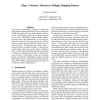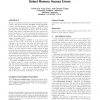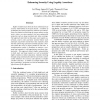5 search results - page 1 / 1 » Attacking Large Industrial Code with Bi-abductive Inference |
FMICS
2009
Springer
14 years 2 months ago
2009
Springer
In joint work with Cristiano Calcagno, Peter O’Hearn, and Hongseok Yang, we have introduced bi-abductive inference and its use in reasoning about heap manipulating programs [5]. ...
USS
2010
13 years 5 months ago
2010
Use-after-free vulnerabilities exploiting so-called dangling pointers to deallocated objects are just as dangerous as buffer overflows: they may enable arbitrary code execution. U...
SIGSOFT
2003
ACM
14 years 8 months ago
2003
ACM
Memory corruption errors lead to non-deterministic, elusive crashes. This paper describes ARCHER (ARray CHeckER) a static, effective memory access checker. ARCHER uses path-sensit...
PLDI
2009
ACM
14 years 2 months ago
2009
ACM
Taint analysis, a form of information-flow analysis, establishes whether values from untrusted methods and parameters may flow into security-sensitive operations. Taint analysis...
WCRE
2005
IEEE
14 years 1 months ago
2005
IEEE
Buffer overflows have been the most common form of security vulnerability in the past decade. A number of techniques have been proposed to address such attacks. Some are limited t...



